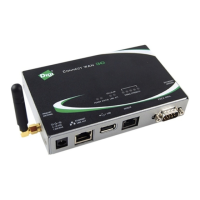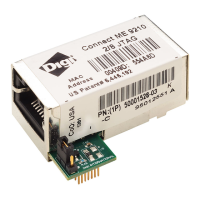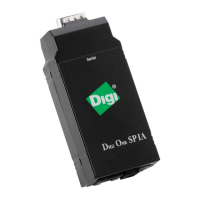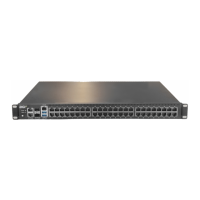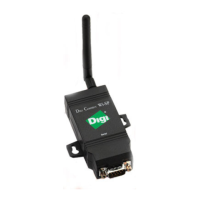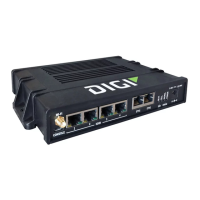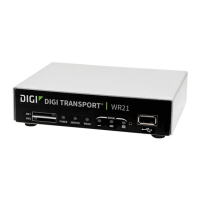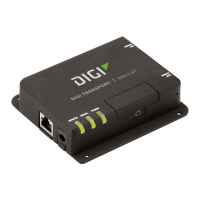Digi Connect and ConnectPort TSFamily features Network connectionsand data paths
Digi Connect Family and ConnectPort TSFamily
18
n
Customize the appearance of the device interface by changing thecompany logo or screen
colors.
n
Run custom Python applications.
n
Define thecustom factory defaultsthat the devices use to restore factory default settings.
Network connections and data paths
Digi Connect and ConnectPort TSFamily devicesallow for several kinds of connections and pathsfor
data flow between Digi Connect and ConnectPort TSFamily devicesand other entities. You can group
these connectionsinto two main categories:
n
Network services, in which a remote entity initiates a connection to a Digi device.
n
Network/serial clients, in which a Digi device initiatesa network connection or opensa serial
port for communication.
Thefollowing topics describe the effectsof enabling featuresand selecting settings when configuring
Digi Connect and ConnectPort TSFamily devices.
Network services
Anetwork service connection occurs when a remote entity initiates a connection to a Digi device.
There are several categories of network services:
n
Network services associated with specific ports
n
Network services associated with serial portsin general
n
Network services associated with the command-line interface
Network servicesassociated with specificports
Thefollowing list details network servicesassociated with specific ports.
n
Reverse telnet: Aremote entity establishes a telnet connection to a Digi serial port. Data
passes transparently between the telnet connection and a named serial port.
n
Reverse raw socket: Aremote entity establishes a raw TCPsocket connection to a Digi serial
port. Data passestransparently between the socket and a named serial port.
n
Reverse TLSsocket: Aremote entity establishes an encrypted raw TCPsocket connection to a
Digi serial port. Data passestransparently to and from a named serial port.
n
LPD: Aremote entity establishes a TCPconnection to a named serial port. TheDigi device
interprets the LPDprotocol and sends a print job out of the serial port.
n
Modem emulation, also known as pseudo-modem (pmodem): Aremote entity establishes a
TCPconnection to a named serial port. This connection is“interpreted” as an incoming call to
the pseudo-modem.
Network servicesassociated with serial portsin general
Thefollowing list details network servicesassociated with serial portsin general.
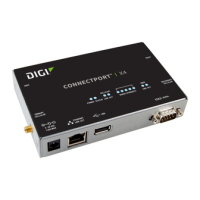
